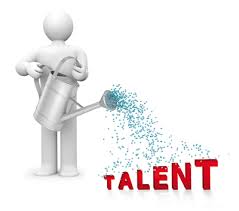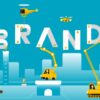
Every business needs to grow in order to be successful and therefore, even before an entrepreneur begins to give shape to their idea, it is important that they come up with a scalable business model in order to ensure long term sustainability in the market.
If you look at all new age businesses, particularly the tech-enabled ones, they are in a position to scale up much faster (sometimes, even overnight!) as compared to traditional asset-heavy businesses and this quick scalability gives them a definite edge over others in the market.
A capital-intensive approach to business expansion is a big ‘No’
Investing more on infrastructure, network, manpower and R&D in today’s still recovering economic scenario is a tough proposition and very risky since scaling up would involve huge costs and time in setting up the necessary infrastructure and resources. The growth in such businesses is usually linear.
Highly scalable businesses on the other hand, grow exponentially. They are not weighed down by the same sales-cost growth relationship as linear models. Instead, as sales increase, costs stay flat, allowing for higher levels of profit over time. Businesses with high scalability grow with lower capital requirements, making them more efficient, and therefore, more attractive to investors too.
Asset Light businesses have the greatest potential for scalability
Being asset light means lower operating costs and risks. The focus here remains on creating value through the business. The management is therefore able to focus on core risks and opportunities and manage them well, thereby extracting maximum value in the process.
Moreover, an asset light company has the flexibility to expand its reach to a new location at the simple click-of-a-button, increase the number of partners in its network and thus expand its capacity and reach to achieve scalability. Through the modes of outsourcing, asset sharing and licensing, such companies can focus their time and resources on R&D, forming strategic alliances for greater synergies and bringing out innovative products. So, asset light organizations are able to achieve scalability and multiply revenue with minimal incremental cost.
Apple is one such renowned company that takes the asset-light route by outsourcing and buying many of its chips from the Taiwan Semiconductor Manufacturing Company. Then, there is the asset-sharing model, where two companies share the cost of expensive assets if utilization is the key to returns. A good instance is where Cathay Pacific and DHL share aircrafts to provide combined passenger-and-cargo flights.
Yet another way to remain asset light is through licensing, whereby a company licenses the use of its product to a partner, sometimes in another industry. For instance, Armani Hotels & Resorts licensed its brand to Dubai-based Emaar Properties in 2004 as a way to participate in the luxury hotel market without actually buying properties.
Investing in the latest and the most advanced technology holds the key to effective scalability
In today’s business environment, it’s not just scalability, but the speed at which you can scale up that is crucial in deciding your fate in the market. It is therefore, important to be nimble and on-your-feet, so you can either lead the change in a dynamic market environment or be able to respond it quickly. This can only be possible if you leverage technology effectively. An asset-heavy model is nothing but a bottleneck that’ll hamper your pace when scaling up.
Technology makes you less reliant on people, and offers quick and accurate insight into different aspects of the business. It therefore helps minimize costs and maximize productivity, and enables better decision-making. If the focus it to be a market leader, it is imperative that technology should be a part of the overall business strategy rather than just a facilitator in the process.
In fact, technology in itself can become the real differentiator for a business, if leverage well,and can ensure better efficiency and effectiveness in operations.
Taking a page out of the home grown online e-commerce giant Snapdeal, the company has garnered a huge customer base, and is valued at roughly over USD 5 billion in just over 5 years since it launched its operations with purely because of an asset light model. Such a feat cannot be accomplished in such a short time frame with an asset heavy business model.
Conclusion
If, having an asset light business, together with technology, can enable faster and better growth, why block money on an asset heavy business and hinder your own chances of keeping up with or staying ahead of competition?…So, GO LIGHT, GROW FAST!
Published on Inc24







